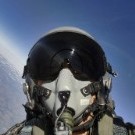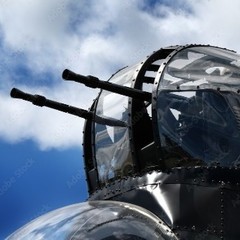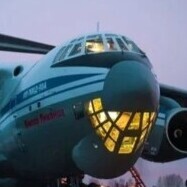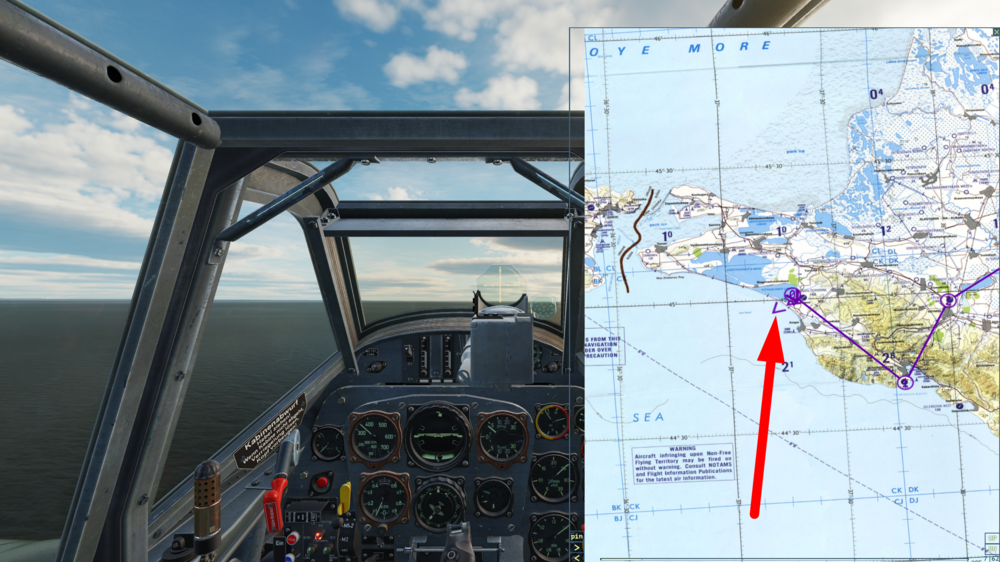Leaderboard
Popular Content
Showing content with the highest reputation on 11/07/23 in all areas
-
A-7E Corsair II development updates https://flyingironsimulations.com/blogs/news/dcs-a-7e-development-update21 points
-
G'day guys! We know that you've been itching to find out more, so this report will be purely focused on the development state of the A-7E Corsair II for DCS World. The SLUF has an all new, much improved 3D model and today we're happy to be sharing the first pictures of the new model in-sim! First, I must apologize for the lengthy gap between development updates. We understand that many of you are keen for more regular update reports, and I will strive to do my best going forward to try and keep the development news flowing through more regularly. Without further ado, let's dive into what we've been up to in 2023! ARTWORK 2023 has been a wild ride for our beloved Corsair; with some difficult decisions being made throughout the year. In our previous report, we unveiled our overhauled and remade 3D model in all of its beauty. The model was exquisitely detailed, and we were very proud of it (and still are) - especially considering the model was built from only photos and blueprints. In 2023, we recruited a new artist, Oleg, who is a veteran of the industry & aircraft modelling, having worked previously with some of the very best teams in Flight Simulation. Not only an incredible 3D artist, Oleg has extensive experience with photogrammetry; the fascinating process of extracting a 3D model from a real-world object via a detailed photography process. This presented us with a unique opportunity to do something we've never done before - scan an entire aircraft as the basis of our model. After being presented with this opportunity, we made the very difficult decision to remake the 3D model AGAIN. Now I know what you're thinking, and don't worry - this decision hasn't had any effect on our release projections; there is still plenty of more programming work to be done in tandem. Of course, this decision was very painful for us, having to set aside thousands of hours of work is not a decision to be made lightly. Ultimately though, we believe that this was the best decision going forward for the team, for the module and for the consumer. Our previous model was excellent, however any model built from blueprints & photos is prone to inaccuracies, as minor as they may be. This is just the nature of dealing with wild blueprint inaccuracies, incomplete photo reference and managing strange photo perspectives and alignment. Photogrammetry eliminates these errors and inaccuracies, providing a true-to-life 3D reference of the model and textures. The external model has progressed at an incredible pace thanks to the photogrammetry, and soon work will begin on the cockpit remodel. Now that the new model has been in development for some time, we are absolutely confident that we made the right decision, and we think that these screenshots might just convince you too Note that the textures here are using the scan reprojection from an A-7P, and don't necessarily represent the final textures or level of wear & tear. PORTUGAL TRIP Earlier this year, Oleg & all of his gear packed up and made the journey to the Museu do Ar (Air Museum) in Portugal. The museum is home to 2 beautiful A-7P aircraft - one in Ovar, and one in Alverca (plus an additional cockpit display in Sintra). We were lucky enough to be granted full access to both aircraft; not only the exterior and cockpits, but also to internals such as the radar & avionics bays, landing gear compartments and intake! With perfect weather shining down on our scanning days, we were able to capture near perfect scans of both airframes - giving us not only 1, but 2 complete reference models. This took several days of laborious photography, crawling inside tiny compartments, setting up lighting rigs and capturing tens of thousands of photos from every angle imaginable. As you can see, the end result has been well worth the effort. We are immensely proud of the new artwork and the progress it's been making; Oleg is doing fantastic work and we truly believe it will be up there with some of the best in DCS World. Of course, we didn't stop there - you don't get an opportunity like this every day! We also used the opportunity to capture video footage inside the cockpit, providing detailed reference of switch, dial and lever motions to provide accurate reference for animation. The final step, using a professional microphone rig, was to capture all of the unique cockpit sounds that we possibly could. Although it would be very easy to use generic switch & lever sounds, we think using genuine sounds from the real cockpit just adds that extra level of immersion & authenticity. FLIGHT MODEL Moving into Phase 4 In the last few months, work has been mainly focused on further developing and refining the flight model, with the aim of getting it ready for testing and into phase 4 of development. It's been quite a lengthy process, requiring a redevelopment of the equations driving the flight model, in order to be able to better integrate the CFD data we have been capturing. We also came across a new source of wind-tunnel data this year, providing more direct data to be used in our tables as well as providing very useful validation data for our CFD model. Without getting too technical, we have significantly expanded upon our stability & control derivative modelling, replacing previously linear derivatives with complete non-linear data tables, often with 3 or 4 dependencies and inputs. Again, this goes above & beyond the derivatives provided from wind-tunnel testing and provides a more in-depth and accurate simulation of aircraft dynamics, particularly at & beyond the edge of performance envelope. This year also saw the expansion and development of the TF-41 engine simulation, with much the same process being applied here. Various data reports & engine simulation software were used to create a comprehensive picture of engine performance, with work ongoing to further develop simulations of various engine subsystems & quirks. The TF-41 is a relatively slow engine to respond, adding an even greater challenge to carrier landings and Air Refuelling operations. Finally, 2023 has seen the completion of the Automatic Flight Control System (AFCS), which includes a complete Control Augmentation System (CAS) as well as multiple autopilot operating modes. We've previously discussed the AFCS in detail and the importance it has on all areas of flight - we're now happy to report that it is finished and awaiting testing! Optimization & Efficiency An EFM in DCS World is typically simulated every 0.005 seconds - meaning that the flight model is updated & recalculated 200 times every second. This is necessary to allow for the accurate computation of aerodynamic models and also for accurate reading of pilot inputs, providing an appropriate level of sensitivity and resolution. Given that an aerodynamic model consists of huge amounts of data (often thousands of data points split into as many as 100+ tables) and heavy calculations, any inefficiencies in the EFM model can lead to a degradation in performance at all times in flight. For this reason, we have been spending time optimizing and improving runtime efficiency in our flight model to try and ensure we have the best possible performance. The focus here was to redevelop our Look-up Table (LUT) model from the ground up, using the latest available research to help direct our efforts. Without getting too far into the nitty gritty details, we have been able to significantly improve the processing time of a simulation loop by increasing the speed & efficiency of our look-up tables. Typically in a LUT, data is stored in tables, which usually have up to 20-30 rows and often the same amount of columns. The computer will take an input, such as AoA, and loop through the table until it finds the nearest matching values. From there we can do mathematical interpolation to determine the correct value that matches our input. This is repeated for each table (can be 100+ tables), and the whole process repeated 200 times per second. While this is an acceptable process in most cases, there is certainly room for improvement. One such approach is to store the previous result, and then use that as a starting to place for the next search loop through the data table. This helps, but still requires a full search loop whenever a large change in input occurs. Our new LUT model however does not require any searching or loops; instead, we have developed a clever method that involves manipulating our data sets so as to maintain a linear relationship between inputs & corresponding data tables, so that the table index (or where to look in the table) can be simply computed from the table input value. We have of course expanded the model to include n-dimension tables, so that it is ready to handle any fresh CFD data we can throw at it! It was important for us to get this right, not only for the performance reasons above but also because the LUT model is a cornerstone of the EFM, and can be reused in any future modules. CFD WORK You'd be forgiven that we would be finished with CFD work on the A7 by now, but not quite! Previously, our CFD model was built in NASA's OpenVSP software, meant to only be a crude representation of the A7 with a very simple, performance based mesh. This has given us acceptable results over the last year, most of which has been implemented into the Flight Model already. However, having captured the scans on a real A7, the opportunity to collect fresh & more accurate CFD data was suddenly available. So this year, using the scan as a base, we have been busy also rebuilding our CFD mesh; this time using a much more detailed and accurate mesh. Given that CFD is entirely mesh dependant, an upgrade to mesh fidelity consequently provides an increased data resolution and accuracy. This was particularly beneficial for capturing peripheral data that is not present in the literature, such as landing gear forces, speedbrake forces and so on. Our previous mesh was very simplistic, and thus only captured a general idea of the forces. Now however, we are building our CFD mesh from Oleg's incredible scanning and modelling work, providing 1:1 accuracy with the mesh and consequently the data collected. It has been a difficult & intensive process, as anyone that has worked in CFD can undoubtedly attest to. Fortunately, we have been working closely with Research in Flight once again to further refine our new model and ensure validity of our collected data. It is a large undertaking and fairly heavy workload, however we are grateful to have the opportunity to work with the experts to really develop our CFD knowledge & skills; not only is it a huge benefit to the A7, but it also opens the door for us to be able to model any future aircraft with full EFM fidelity. Here you can see just a very, very small sample of some of data collected from a test run of the landing gear model. MECHANICAL SYSTEMS The Corsair has a beautiful duality as an aircraft; it was a technological pioneer of the time, featuring the first fully-fledged Heads-Up Display unit that we are so familiar with in modern aircraft. Yet, it was also very much an 'analogue' jet of the past, lacking the huge array of sensors and digital control systems that modern fighters are equipped with. The Corsair is a very much a hybrid of the two; a transition between two eras in military aviation. With this in mind, we've been spending some more time this year really expanding upon our simulations of the aircrafts mechanical systems such as gear & ground operations, carrier ops & systems, hydraulic & fuel systems. While these aren't as flashy as the weapons & avionics systems, these elements make up a considerable portion of the airframe, procedures and overall simulation experience, and its important that we get them right. As a simple example, the speedbrake is hydraulically operated, but not immune to the intense forces of high-speed flight. It will be buffeted and pushed back, partially retracted by a strong enough airflow. It is prone to drooping & partially opening should PC2 hydraulic pressure fail. It cannot be operated with gear extended, unless using a manual PC2 hand pump when on the ground. We have done our very best to capture all of these quirks & details, really developing the unique character of the Corsair II airframe. As we are modelling a later-era Corsair, the airframe includes Automatic Manoeuvring Flaps (AMF), an advanced flap control system designed to increase turn performance and manoeuvrability in lower speed conditions. The system operates by partially extending the trailing & leading edge flaps when angle of attack exceeds 14.75 units at an airspeed below 0.7 mach, retracting again below 10.5 units AoA or above 0.7 mach. The AMF system has been completed & integrated fully in 2023! CARRIER & GROUND OPS We are happy to report that the Corsair is now operational off the carrier deck, having made her maiden launch & trap several weeks back. Landing a Corsair on the ship is immensely difficult, and success will not come easily. We have to commend the incredible skill & courage of real-world Corsair pilots; to be able to regularly achieve such a feat is nothing short of extraordinary. We have completed work on the launch bar system and its various safety measures & dependencies, as well as the arresting hook system, nosewheel steering, braking systems, landing gear systems and much more. To give you an example of the work that's been happening, lets discuss the Nose Gear Steering system as an example. The Nose Gear Steering (NGS) system is the power steering of the Corsair; it is electrically controlled & hydraulically actuated via a hydraulic cylinder mounted on the nose gear shock strut. When the system is deenergized, it provides an automatic nose gear shimmy damping function - essentially damping nose-wheel wobble and providing a smoother taxi. Engaging the system via the Nose Gear Steering button on the grip allows the pilot to steer via the rudders up to 60° off-centre. Hydraulic power is provided via the PC2 system and requires the utilities isolation valve to be OPEN - it will not function if the valve is closed. Automatic recentring of the nose gear occurs during gear retraction, or when the right gear weight on wheel sensor determines there is no weight on the gear. When this happens, a servo valve repositions to block PC2 hydraulic pressure. A spring-loaded damper shutoff valve then moves into position, connecting the left & right sides of the nose gear steering system to a damping orifice, restoring the automatic shimmy damping functionality. We are quite pleased that we've been able to capture & simulate this functionality; it will be important to follow procedures correctly when flying the Corsair. As you can see, the technology used is slightly older than what you might be used to, and has some more limitations than modern aircraft. There is alot to remember, even with something simple such as the Nose Gear Steering. You'll need to make sure your utilities valve is open, flap settings are correct, hydraulic pressure is okay and even then you'll always need to be on your toes to ensure you don't exceed that 60° limitation or you may be in for a rapid departure off the deck! In a similar vein, we have completed work on the braking system - featuring simulation of antiskid behaviour, PC2 pressure dependency and an additional emergency wheel brake system. Landing Gear operation also requires correct management of the utilities isolation valve, and features a similarly detailed emergency release system. I won't go into as much detail on these systems, but each has been carefully crafted to match the detailed operation procedures and information available in the NATOPS & pilot manuals (as well as with pilot input of course!). There have been a few challenges along the way, such as overcoming DCSs rigid body physics in-order to create a realistic simulation of hydraulic compression, something that is seen during a carrier landing when the arresting hook is compressed. Most likely you might never notice these types of details when you fly the Corsair, and thats good however extensive work has gone into their development in order to provide a natural, realistic experience. Most of these core systems are in various stages of completion now, with work on-going on the suspension model & fuel systems. SENSORS & AVIONICS Much time has been spent this year on improving the realism of the flow of information that occurs through the A7's suite of computers and sensors. Every display, every computer, every calculation throughout the avionics suite relies on data that is collected via specific sensors in the aircraft. These sensors pass data through to the AN/ASN-91(V) Tactical Computer, the central brain & processor of the avionics suite. The computer can then run calculations as needed, and feed data to various displays and systems. As you might imagine, any disruptions in this chain of information can have severe consequences on the quality and availability of data available to the pilot. Fortunately, the NATOPS manual goes into great detail regarding this flow of information & we are also lucky to have access to a paper that extensively details the inner workings of the software used in the avionics suite. You can see an example below, just one page of many demonstrating the flow of information through the aircraft. To this end, we have been working on detailing our aircraft sensors - the first part of the information chain. We have created an accurate simulation of the Corsairs unique Angle of Attack system, which used non-standard AoA 'units' instead of degrees and is a key data element for a number of display & guidance systems. Work is ongoing to correctly model damage to any sensors, and the consequential disruptions this has on the avionics suite. We are quite pleased with the progress we've made on this front through 2023, having completed the Air Data Computer, begun work on the IMS and have completed integrating most of our systems correctly within the chain of information. Work has now also begun in earnest on the Tactical Computer, one of the most sophisticated parts of the aircraft (and consequently most complex to develop). The Corsair does not have any modern MFD's; consequently any inputs the pilot needs to make, settings that need to be changed, data that needs to be read - it all happens via the Tactical Computer and its numerical inputs. The functionality of the Tactical Computer is enormous and beyond the scope of this report; however I have included some of the input codes below to give you a taste of how the computer is operated, and the extensive amount of information that can be accessed and edited as required. Whilst much of the basic functionality of the Tactical Computer has already been done, we expect we will be continually working on advanced features right up until release. WHEN WILL IT BE FINISHED?? Two weeks Just kidding, unfortunately we still don't have a solid estimate on when we will be finished with development. Officially, we are expecting to move into Phase 4 of development sometime early next year, with the aim to begin testing at some point during the year. We are only a small team, without the resources to really expedite development over a couple of years. What we do have in spades is passion for the aircraft, and a willingness to craft if to the absolute highest standards, as long as that may take. We do want to extend a sincere thank you to everyone reading this, everybody that stops into our discord to chat about the A7 and everybody leaving comments on our social media and blog posts. Truly, you guys have been so patient and supportive of our work, it fills us with pride to be a part of such an excellent community of aviation enthusiasts. Thank you! Thank you for reading & for your continued support. Cheers, Dan, Alex, Raimond, Oleg & Iakov. FlyingIron Simulations12 points
-
From FlyingIron Simulations, A-7 Corsair II develop Pics11 points
-
Hi guys. Finally we have released the VSN F-9F(5) EFM/FC3 mod. You can get it here: https://www.dropbox.com/scl/fi/9p9k9kcvfq1f6f58mfxci/VSN_F9F-v2.8.7.101-FC3-EFM.7z?rlkey=y3vh1u5nl0kmyo4b01fl43sww&dl=0 or here https://drive.filen.io/d/1a499758-63aa-43b8-8fdd-dea14cb467f7#VAvbNSmQojw7tOrfVJE07Ud0nYdqfRML We would recommend to watch JP's trailer first, since it get's you in the mood to fly something a bit more "old fashioned" again. You can watch it here: https://www.youtube.com/watch?v=hAhkj5CZwJ8 If something is not working correctly, feel free to post it here or ping me directly. Have fun and enjoy flying the Panther Cheers. PeeJott.8 points
-
Dear Simmers. Sorry, we currently cannot provide you with updates. Stay tuned.7 points
-
Not this again... Yes the Naval F-4 was incredible and I think I'd prefer an F-4J over the hard-wing F-4E which was the main E version in Vietnam. But there's logic to the choice. By production numbers, tonnage dropped, aircraft lost and A2A victories, countries served and time in service the F-4E is the definitive F-4 for most nations whether anyone likes this or not, it is a fact. And I know this will fall on a few deaf ears but I'll reiterate this again - that doesn't make the F-4E better, or more significant, or more practical or whatever compared to the excellent Navy F-4. These are just facts that the "wtf, why would they choose the F-4E" crew doesn't seem to want to accept. If a design evolves into something else it evolves into something else. Some seem obsessed with the idea that the F-4 isn't being represented in its original design form and purpose which is true, but it only makes sense to present this as a travesty (which it isn't) if you forget about all the other stuff I mentioned about the E above. My goal isn't convince you that the F-4E is better (I know it's not, it's just different), but to inform you better so you can empathize why the F-4E was chosen. You don't have to agree with the choice but to not at least understand the choice is to close your eyes, block your ears and go "lalalalala" and I know you're not that kind of person right? Oh and one last thing, if anyone despises the F-4E so much, just pretend its a totally different jet! Easy. I want a FF F-15C but you don't see me telling the world that the F-15E was the wrong or surprising choice. RAZBAM simply decided to make that specific plane - a different one than the purely A2A version that the design was orignally made for.7 points
-
I thought so too, back in time, in a different sim. But one day the campaign told me I had to do a Recce flight. It didn't go well. About a day later, I had to do another photo recon flight, I wasn't liking the assignment, but I was bound and determined to push through the campaign to the end, and doing so meant doing the recon flights. I picked an A-4 Skyhawk... quick, but NOT fast. I put more than an hour figuring out loadouts, strategy, map waypoints, figuring out my actions for this, for that, for the flight. Upon realilsing I'm being intercepted, do I climb, or do I descend to gain speed? Do I ignore the interceptor and just hope to maintain enough speed to keep them from getting too close? Drop tanks? cannon shells full load, or empty to rely on raw speed for defence? Do I ditch the Skyhawk for something with afterburners and supersonic ability? Or do I use the light Skyhawk with a tight fuel load, and hope that firewalled dry thrust might be enough? Do I turn aggressively away if intercepted, or carry out the mission while minimising AOA to preserve enough speed to keep enemy from getting too close? I opted for the lightest Skyhawk I could manage, just enough fuel to do the mission. No armaments, I didn't want any temptation to try shooting down an enemy jet... that would let another get close for shots, and me by myself is not good for 3 on 1 engagement. Gentle turns, as much airspeed as I could wring out of the airframe. Dry throttle to the max. Clean airframe, no pylons to slow me down. Mostly level flight. Not on the deck, but not too high either. I wanted to be able to dive for the deck if an SA-2 came at me. Talk about intense... flying telephone poles launched in my general direction.... Migs trying to get at me. I thread the needle, gently but really tense. No wingmen to save me. I get the pics. Gentle turn to go home, not too hard a turn, gotta keep that airspeed pegged as high as possible. Oh crap, a Mig is gaining on my quickly.... a minute later I'm sprayed with giant green tracers.... I pitch up and roll, again gently to keep my speed, but enough to ruin his aim, throw the trace off.... another burst. misses... gentle manoeuvres, he's in full burner and I'm dead meat!! Wait, I haven't seen green tracers in a minute... look back... he's RTB !! Must have burned all the way to Bingo fuel and had to disengage! That flight caused me to go from thinking recon fliights were not-fun drudgery to some of the most fun I've ever had in a simulator! Became on of my favourite taskings! A later flight had me bring maybe 50 cannon shells, and I managed to get a target of opportunity, without sacrificing raw airspeed... aim was great, and it went down in flames. No he was not doing full ACM, just an unlucky rookie caught by surprise, and me with just enough shells to connect and do damage. Dodging SAM's in later missions.5 points
-
You can’t apply the flight characteristics of the Huey to the Apache. The Huey has no SCAS, but hydraulically boosted mechanical flight controls directly connected to the swash plate. There is a natural control lag that exists in the Huey. The Apaches command augmentation system is designed to do away with that control lag, which means when you make an input the output is functionally immediate. The real Apache responds at the speed of thought. It took pilots coming over from the old TH-67 a little while to get used to the immediate response the Apaches flight controls have, because the 67 had the same rotor head type (semi rigid underslung) and flight control scheme of the Huey.5 points
-
No I am not kidding and you must be terribly misinformed, they never ever promised an F-14D and have repeatedly stated as much so often that it has become a meme at this point. This is an actual example of "We'd like to do a D and B/U, but we do not have the information necessary to do so to DCS standards". The F-14A-95GR to my understanding was the block designation given to the Iranians, where did you hear that wasn't real life? They have also repeatedly said the Iranian F-14 is a bonus version (Which wasn't in the original announcment I might add) and is going to be the Early 135GR with some systems disabled, not an exact replica of an Iranian Tomcat. Me and I assume others as well. For those who don't buy the E because they wanted a Naval F-4, there's Heatblur's market to make and sell one. And as Heatblur has repeated, the Naval and Air Force Phantoms are different enough to warrant a separate module. They would know more about that subject than either of us since they are in the business of making modules and listening to their customers. Others besides you have expressed very strong anti-F-4E sentiments and very pro-navy F-4 sentiments. They have seen this and knew it would happen which is why they already beat you to the punch in the FAQ stating they are making a Naval F-4 as well. The same thing happened with complaints about Jester, now we are getting a much imporved and scriptable Jester AI. the same thing also happened with the IRIAF Tomcat where there was much clamoring for one and they added it to the F-14 as a bonus.5 points
-
5 points
-
I've held back on the Russians since ED said they were making new infantry. I don't want to spend too much time no something that soon would be added in core DCS. Especially since infantry takes quite a bit of time to implement. Yeah, we need all the different roles like the US Infantry asset. Well, helicopters take a lot of time to implement, so we'll see. As I mentioned above, it depends on EDs release schedule of their new infantry. Thanks, I'll add it to the list of fixes for the next release. I'll have to take another look at the ranges, I was under the impression that the ERFB is 20-25 km, the ERFB-BB 40 km and the ERFB-BB/RA around 60-70 km. So I thought I'd start with the conventional full bore at release and add the base bleed and/or rocket assisted versions later on. It's on the list, I also have to find suitable 3d models. I haven't found a way to manipulate or customize these effects on a mod level (not affecting the core game). Thanks, I'll add it to the fix list. When I made the LD-3000 I thought I'd scale it as the last step before release since I had trouble finding actual dimensions for it, so I would have to just do it by eye. Unfortunately I forgot it before release.4 points
-
Tactical reconnaissance is another role we need to add to DCS. Picture a dynamic campaign needing to dispatch reconnaissance aircraft like RF-4s, RF-101s, RA-5s, etc to track down Scuds.4 points
-
I didn't bother I just bought the module the 101 great little plane.4 points
-
I'm really tired of this "it will never happen" or "it was never promised" BS. You are verifiably wrong and if you would just read the FAQ you would realize this. "Yes!" is a promise, not a maybe... If you want more reciepts about possible release times and how much heatblur cares about the naval F-4, here you go. Here we see Cobra saying that the Naval F-4 is "not a distant afterthought" And here we see that the subforum itself is DCS: F-4 Phantom, NOT DCS: F-4E Phantom like the current posts within that forum. The subforum is not specific because it will cover ALL phantom variants released by Heatblur. Now let's jump over to Discord where IronMike talks about pricing and reiterrates it will be a separate module(different aircraft) and why they will be separate. And finally we're back to Cobra with the news (which shouldn't really come as a surprise) that the Naval Phantoms "will take precedence once the -E is complete and out of Early Access". Wow, so just like with the F-14, they aren't really working on mulitple versions at once, they are doing the E, and then once they're done with that, they will work on a naval variant. Is the naval variant coming after the Eurofighter and A-6? Likely yes as Ironmike confirmed that the current release roadmap is F-4E, Eurofighter, and A-6E with the naval phantoms to then come as Cobra said after the E exits Early Access. Again, we never see the word "if" in any of this, it's always, when, where, and how which show just like everything else that they have promised a Naval F-4 and intend to deliver on it. So just learn to be patient and wait, just like everyone else is doing for every other DCS module that has been announced already and taking years to develop with little news. The A-6 for example, which was announced before the F-4E and before Heatblur took over the Eurofighter, and we still don't have the AI model. Or the 10 year on-off development of the Strike Eagle. Or literally any other DCS module for that matter, this stuff takes time and whining NEVER makes the module you want release faster.4 points
-
- Simply tick "use DCS system resolution" in the VR settings tab - close DCS - go edit the options.lua in your savegames folder - look for ["graphics"] = { make sure that ["fullScreen"] = false, and edit the values behind ["height"] = and ["width"] = to your liking This way you can let the VR mirror take any rectangle shape you want. Need a square? No problem. (A square would be the closest shape to what is rendered for each eye in your headset) The VR mirror will always be placed in the dead center of your desktop. After this, the resolution selection tab in system settings will show your edited resolution, never touch it again. I recommend a height value that is always a couple hundred pixels below your monitor's desktop resolution, something like 1200 on a 1440p monitor. This prevents "slipping" of the VR mirror under the taskbar and tapping "out of window" mode if the mouse cursor hits the taskbar.3 points
-
That’s fine - just the fact that we can see a sign of life after three months of absence allows us all a collective breath of relief. If you check in regularly just to tell us that you are still alive, most of us would still see that as a positive sign. So, great to hear from you, all the best, and hope to hear again from you soon3 points
-
This is very short driving mission to show off and test new infantry embarking feature. Have fun! Keys you might need: F7 - ground units view Ralt+J - jump into vehicle W, S, A, D - vehicle control X, C - gear selection H - handbrake \ - comms menu (here's F6 - embarking/disembarking) Map: Caucasus Modules needed: Combined Arms DCS version needed: 2.9 or higher Play time: ~10 minutes VR friendly backup.miz3 points
-
Hey guys, I'm so sorry that I'm so late in seeing this topic! Really appreciate your comments & feedback, and getting to know more about what aircraft interest you guys for DCS. We don't have any solid plans set in stone for future DCS modules right now; we are still committed to finishing the A7 before we start on any other modules in earnest. I can tell you though that we are very much open to coming to bringing some of our modules across to DCS in the future, and we are in-fact coding the A7 in such a way so as to make the porting process easier for ourselves should the time come. By that I mean we are making our flight model code, core systems code and so on modular so that we can potentially reuse it for other modules in the future. The same goes with CFD work - we are putting processes in place to ensure that we can much more efficiently repeat the process in future. Our MSFS P-38 sim is officially licensed by Lockheed Martin, and as such comes with a few strings attached to it. It is definitely inside the realm of possibility though in the future! Thanks for your interest! Cheers Dan FlyingIron Simulations3 points
-
Make sure the engine is on and running and that you have selected the appropriate gear for driving.3 points
-
Well, let's just say it does some things well and some things... possibly not so well. Infamous adverse compressibility effects in a dive are, for example, an elephant in the room, because in practical terms they're non-existent in DCS Thunderbolt. Emphasis on "in practical terms", because even though a very mild Mach tuck and mild elevator stiffness are indeed simulated, easy and effective pitch control is still maintained at every power, dive speed and high altitude combo you can test in mission editor. So, contrary to flight manual notes, you can just forget about compressibility and about assigning controls to dive recover flaps, as you will never need to use them anyway. About the engine RPM, please note that even the 2880 limit for 30 seconds posted in your manual is not possible in DCS, let alone higher one from other revisions. Testing in v 2.9 shows the redline of 2750 is when damage simulation starts every time, with time-to-failure depending on how long and how far we are above that number. For example: staying between 2750 and 2800 kills master bearing in about 45 seconds. Staying between 2800 and 2850 kills the bearing in about 18 seconds. Measured with stopwatch and data from post-mission briefings. Going to 2900+ range will kill the bearing below 12 seconds. That's with power-on, power off would be even faster for the forces reasons explained in your manual. Let's get back on topic, though. The current engine RPM limits are here to stay for now, as was officially confirmed in the other thread on the subject, with suggestion for revision at a later date forwarded to the devs by Nineline. Propeller pitch limits, however, might indeed help figuring out what the most plausible simulated engine behaviour in a dive we should expect. Kablamoman presented some valuable prop reference data here.3 points
-
I am basically only flying WWII, and love the possibility of getting lost. I have just now being told the possibility to always get your exact position marked on the kneeboard. This, and the knowledge that everybody seems to be doing this online, abolutely ruins immersion for me. I do not want GPS in WWII. Please, PLEASE, disable this, or make it a server option. Thx!3 points
-
3 points
-
The -21 wasn't meant by it's design team to be an air superiority fighter (neither was the F-4), so switchology is a result of that. Their thinking, which is more or less mirrored by your approach is "set switches at the right time and go on with the flow". That's a very GCI centered approach. Vietnam showed both sides, that this approach doesn't work, when you're jumped by an opponent out of the blue. If your first indication of a fight is a "BREAK!" call, or your buddy going way up in entropy, then going inside the pit to find a switch should not be number one on your priority list. I think (not sure, some Fishbed-priest probably knows, though) the bis and MF already did reflect some of the experiences in the field and had their switchology optimized to some degree. The F-4 also went through several cockpit mods and quality of life upgrades that came directly out of the SEA experiences.3 points
-
Es gibt da auch bereits fertige Mod's im Download Bereich, hier zwei davon: https://www.digitalcombatsimulator.com/de/files/filter/user-is-gutersnipe/apply/3 points
-
3 points
-
Nah, maybe for the US and Brits, but the rest of the world definitely thinks of the Phantom as a land-based fighter, mostly with a gun.3 points
-
I thought that to give you more context, I could share an example of what is the level of detail at which we work when we model and code the aircraft. Let's consider the AN/ASA-32 Automatic Flight Control System, on which I worked together with @Cat107. In one of the documents published by NASA and publicly available, you'll find this formula: We managed to identify the resistors and capacitors responsible for that 0.5 damping factor - and actually, it's not precisely 0.5, but if you round it to one decimal digit, it will be. However, we don't model separate RC elements in the code, and we represent them as a single 'canceller' component with a transfer function - just converted to a discrete one - as in the diagram. This yaw rate canceller, together with a pitch rate canceller, and multiple other (electronic) devices such as servos, synchros, amplifiers, relays, switches, rate gyros, accelerometers, and power supplies, forms what is designated as AN/ASA-32. I think the step between an RC element and individual resistors and capacitors is where we want to draw the boundary of our component simulation. Finally, as I wrote in another topic that is now gone, we are open to sharing the tech with our current and future partners, which also includes benefiting from access to the constantly growing library of components.3 points
-
Hello, A-4E-C Pilots! This new version adds some exciting features like new damage effects, ADF, improved radios and new nosewheel castering simulation. This version of the A-4E-C requires DCS version 2.9, which as of release, is only available on the OpenBeta branch of DCS World. If you're still playing DCS World version 2.8, you'll want to stick with the version 2.1.1 for now. You can download older versions from the A-4E-C Releases page. Remember that in multiplayer, server and client versions of the A-4E-C must match, so be sure you are in sync with your favorite server's configuration when playing online! https://github.com/heclak/community-a4e-c/releases/tag/v2.2 Version 2.2 - 27 Oct 2023 Added A new NWS (that's Nosewheel Simulation, mind you) makes correcting turns on the ground much easier, and eliminating the "stuck wheel" feeling due to over-braking in taxi. Amaze your friends with your drifting skill! AN/ARC-51 UHF Radio supports DCS VOIP radios. In addition to Radio Microphone Push-to-Talk (PTT) Transmit binding for sending to VOIP radio, a second Radio Microphone Push-to-Talk (PTT) Guard bindings allows the pilot to transmit to the guard frequency when the radio is in TR+G mode. These two bindings function identically to the DCS default "cockpit r.1 VoIP PTT" and "cockpit r.2 VoIP PTT" bindings, respectively, and you can use them instead if you wish. See the Updated AN/ARC-51 UHF Radio guidance on page 1-2 in the Kneeboard Manual for additional details. AN/ARN-25 Automated Direction Finder (ADF) system is now modeled for use with the AN/ARC-51 UHF Radio. Information on using the equipment is detailed in the Kneeboard Manual on page 1-3. Weapons: AIM-9J and AIM-9P3 are available on inboard and outboard stations. AGM-45B Shrike is available loadout options on inboard and outboard stations. 2.75" Hydra rockets are available loadout options with LAU-3 (19 rocket) and LAU-68 (7 rocket) launchers, including white phosphorous, HE, HEAT, as well as Mk1, Mk61, and WRU-1/B practice munitions to the loadout options. LAU-68 launchers also allow loadouts with Para Illum and Practice Smoke Hydra rockets. Outboard stations support 1 launcher, inboard stations up to 2, and up to 3 can be added on the centerline station. AN/ASQ-T50 TCTS ACMI pod is available on inboard and outboard stations. Enhanced damage modeling: In addition to Reduced effect of transient forces to prevent wake breaking wings, and improved engine damage. The following system failures can be triggered by damage, or selected as a failure in mission editor: Radar Receiver Gear Jamming Gear Actuator Pitot Tube Static Port Boost Pump Wing Pump Aileron Actuators Elevator Actuator Rudder Actuator Wing Tank Leak Fuselage Tank Leak Engine and Inlet Cold Start, Taxi, Takeoff, and Free Flight missions for the Sinai map are available in the Instant Action. Input bindings: Else option for the Chaff Dispenser Select added (for a 3-position switch). Radar Altitude Warning - Slew axis. Changed Standardized naming conventions for loadouts with multiple ejector racks, and provided additional detail for weapon payloads original to the A-4E-C. Recalculated the weight of rocket launcher pod payloads. Kneeboard Manual: Updated AN/ARN-52 TACAN guidance on page 1-3. Updated Airfield Radio and ILS data on page 1-4, which can now accomodate up to 30 entries, making it compatible with the contents of the Sinai map. Updated Shrike and Sidewinder delivery guidance on page 3-5. Updated AN/APR-25 Radar Homing and Warning System guidance on page 3-6. Compressed images for smaller file size and faster loading. Fixed TACAN and MCL system crashes. The AN/ARC-51 UHF Radio volume knob now adjusts radio and VOIP radio volume. The AN/APG-53A Radar OBST tone and AN/APR-25 RHWR audio properly route to the Helmet sound channel. Black lines along center and around the nose cones of fuel tanks have been removed. Malaysia TUDM livery uses the provided custom fuel tanks. Station arming switches no longer produce a debug printout with the weapon selector in the BOMBS & GM ARM position. Loadout option inaccuracies in the Kneeboard Manual on page 1-6 are corrected. Eliminated Kneeboard Manual typos in page reference annotations.3 points
-
Good morning fellow pilots, and welcome to Viggen.training! With this thread I am opening a new era of pilot training for our beloved "AJS37 Viggen" module. The thread gives you a rough outline of the project, which I am proudly presenting to you! What is it? Viggen.training is the first public pilot type-training platform for the AJS37 Viggen for DCS. The training is designed open, so that you can start at any time, and only complete the content that you really need. It is not a requirement to start from scratch. On the other hand, if you are new to the AJS37 Viggen, you may find it useful to start over with this sophisticated training. The syllabus The basis for Viggen.training is the ATIS 37 manual, a document used by the Swedish Air Force. This manual contains the whole training syllabus (all relevant learning objectives and required training flights and check-flights) for the Viggen. The syllabus is divided into 3 stages/phases (Swedish "skede"): "Skede 1" "Skede 2" "Skede 3" In order to make this work using a computer game simulation like DCS, the syllabus had to be modified in one way or another. Viggen.training will initially cover “Skede 1”, which focuses on: Flight training ("flygutbildning" - FLY) Theoretical knowledge training ("teknik" - TEK) What is waiting for you? Homepage The homepage www.viggen.training is your “home-base” and offers a collection of services. You can, e.g. create your own user profile. The user profile is your "life record" and also contains a "flight log". The homepage also hosts the "Eternal list of the best" (for the best of the best). You may visit the training office and the flight line, and maintain your user data and user settings. Training Office You can enter the "training office", which hosts a lot of information for you: You can read about: The theoretical knowledge training The theoretical knowledge examinations The current theoretical knowledge training syllabus (2023) You can download a variety of training material You can browse the collection of relevant training videos Flight line You can enter the "flight line", which currently hosts 3 different types of missions/flights: Quick missions Training flights Proficiency-check flights QUICK MISSIONS These are intended to bridge the gap until the entire training syllabus becomes finished (yes, it is work in progress). You may use the quick missions in a sense of "recurrent training", so that you can quickly become "current" again after a long absence from flying the Viggen. Another approach could be to see them as "unguided type training", where you "learn by doing" on your own. Currently, 69 missions are available, covering the most important topics. TRAINING FLIGHTS These are: "Simulator flights" guided by an instructor (SUL) "Real flights" guided by an instructor in the double seater (Dubbelkommando - DK) "Real flights" without instructor in the single seater (Enkelkommando - EK) All flights are made for DCS, you just have to click the take-off button, download the miz. file and then fly it. If you want to log this flight, you must enter the flight code into the CK37, and your flight time and your success rates then become logged; finally, once you have finished your flight, you just have to upload the .LOG file created on your Windows Desktop folder. This list also contains all necessary self-study lessons (KLASS), they are in between the flights. Each entry provides the name of the lesson, a detailed description including: Topics Theoretical knowledge requirements and references to training material Lesson type A detailed briefing PROFICIENCY CHECK FLIGHTS These flights seriously test your skills in certain phases of the training; the success of these flights is relevant for your "life record" and for the "eternal list of the best". They test if you fly the aircraft safely, and in a sense of the specific requirements of the flight. The home-base is Kobuleti (in Caucasus region), which hosts a real airspace environment. And yes, your performances will be rated in depth, so be prepared! At least one proficiency check flight will be available very soon. Further missions might become available in the near future, but these are highly dependent on user acceptance of the whole project. These services are free! ASSESSMENT CENTER There are even more services waiting for you in the Assessment Center: Preparation courses AJS37 Viggen Manual RC2.1 (page per page, with progress bar) A1 / B1 Exam Preparation Course (hints for questions, and all necessary RC2.1 pages to study) B4 Exam Preparation Course (hints for questions, and all necessary RC2.1 pages to study) All training material and all preparation courses are free! ATPL training material If you have no experience with flight instruments and basic navigation at all, you may study ATPL training material, which is available in the form of e-learning courses; these are used in the real FCL pilot training environment worldwide. Currently available courses are: Instruments / 02 Measurement of air-data parameters (Part 1 - Part 3) Instruments / 03 Magnetism Instruments / 04 Gyro Instruments / 05 Inertial navigation General navigation / 01 Basic navigation On user request, further chapters of FCL content might become available very quickly. All ATPL courses are paid content, they can be bought at any time. Pre-entry checks You can take “pre-entry checks”; these serve as proof for being fit for the examinations. All pre-entry checks are free! Examinations You can take "examinations"; these are question banks regarding all technical and procedural aspects of the Viggen. For accomplished examinations, you will receive a dedicated certificate. This is the real stuff, and of course a real challenge. All examinations are paid content, they can be bought at any time. A word about the history of the project: This project was created in spring 2022; it is officially supported by Heatblur Simulations and Eagle Dynamics. Two people are currently working on the project in the foreground and a few more people support it in the background. The return of paid services is solely used to keep up the project (assessment center, homepage, domain, programming, etc.). Note: The introductory price for all paid services is reduced, so take advantage of this opportunity now! Thanks I would like to thank @Groove from Eagle Dynamics and @IronMike from Heatblur Simulations for giving their official "thumbsup". I would give A BIG THANK YOU to Eagle Dynamics for creating DCS world and Heatblur Simulations for making such a wonderful module! Guys, if you have questions and feedback, please use this topic. You are definitely invited to become a member of the Viggen Pilots squad, so join now! And as of now, we are keeping scores ... Yours sincerely, TOViper2 points
-
UPDATE 03 November 2023 One year ago today a group of us met on Discord to discuss a way forward when the source code appeared on Github, uploaded by the original developer of Vaicom Pro. Could we make it fully functional again in DCS World 2.8.6? For VR pilots that had become reliant on the ability to simply talk to the Ai in DCS rather than use a mouse and menu structure, the loss of Vaicom Pro was a real blow. We were super motivated to just get it working again. Given the complexity of the code and it's extension based functions, with no developer insight or understanding of how it was built we set on 48 hour patching binge and created the first community version that sort of worked for most modules. One year on we have kept refining and simplifying the code to try and reduce the workload of keeping it functioning with each new DCS build. We have had a few hurdles placed in front of us along the way, the introduction of pure client scripts, the reindexing of airfield names on many maps, changes to the comms layer behavior, the list goes on. But overall the plugin has become stable again. Some milestones: - Create a solution based development environment. - Establish a Beta Test team (thank you for your hard work). - Move Vaicom Pro interactions to the DX layer. - Add 3rd party missing modules to the list of supported Aircraft. - Make AIRIO and Chatter dependents of the main VAICOMPRO.dll - Add many of the Community Mod modules to Vaicom pro. - Flesh out Carrier Comms and supported carriers. - Remove redundant UI options and add extension control via the UI. - Establishing an Auto Update function for vaicom Pro with no ongoing costs. - Passing 3000 members on this Discord and 20K downloads on GitHub. (Thanks to our Community Fixers for the endless support to the user base) - New friendships and many laughs amongst the team. The future: - Version 2.9.0.5 is currently in Beta Test This will add more Community Aircraft and fix some bugs. - Work has begun on trying to fully understand the AIRIO extension to allow us to better adapt to changes we might need to make with Jester 2.0 - Try to stay keyboard free! Happy Birthday Vaicom Pro Community Edition, it's been a blast2 points
-
Yeah, i'ts hard to find good videos about F1's airbrakes, i'ts the only one i found. Looking back at the video i still think that the time for the deployment/retraction sequence is around 2 seconds, or even a little less, even with the adding of a good delay on the part hidden by the air inlet. On this video, you can see that the start of the deploying sequence (masqued by the air inlet on 1st video) is REALLY fast2 points
-
merged the threads into the bug section, we will take a look thanks2 points
-
2 points
-
I think the RF-4B wasn't employed all that much on the boat. First, it came to the party later then the RF-4C and when it did, there still were lots of RA-5Cs und especially RF-8Gs around. I did look for some evidence of the nose folding over, but I couldn't find any. What's interesting, though, is that it had a lot of mods from the F-4J right from the start, or introduced over time: - slotted stabilator - uplocked inboard droops - J79-10 engines were introduced during it's service, while the USAF's RF-4Cs stuck to their short-nozzeled motors (though export RF-4Es had the -17 motor) - ECM antennas on the intakes, similar to the late Js The RFs are pretty awesome jets and I do hope that we at least get to see them as AI assets. Now, it would be even more aresome if we could get one as a module, but I guess people aren't ready for a full-time recce platform just yet2 points
-
yes, more info here: https://www.digitalcombatsimulator.com/en/support/faq/steam/#33031262 points
-
You are not correct. It did work, in fact it worked well prior to 2.7 as well, for several years. I first reported on this issue in DCS back in 2016. It was a problem then, and then at some point ceased being one. I can only speak from my own experience, it may have remained an issue for others. As for MSFS and IL-2. I can jump into either of those right now, and it is a night and day difference. The issue simply doesn't exist. With MSFS, I need to enable both vsync and gsync, and with both I cap my framerate at 100 FPS. But I don't need 60 or 120 FPS to get it smooth, it is smooth at variable framerates. This nullifies the idea it is a poling problem, or hardware issue, per se. If it was, shouldn't I have this problem in all applications that use TrackIR? I don't, therefore a more probable cause is how the game engine interprets TrackIR data. To quote NaturalPoint themselves from the other week "TrackIR does attempt some smoothing, but again, only reports that same data 120 times a second. If the game is out of sync, you will see periods of time where the game and TrackIR line up, and periods of time where it does not. This results in multiple frames in a row receiving the same data, and some frames even being lost. The jumping/acceleration the user observes is likely the game engine not polling at the right rate with his configuration. This is especially a problem if the game is depending on the framerate to poll TrackIR information. It should be its own process independent of framerate. I also see games often do their own smoothing for other input sources so that this is less noticeable if anything goes out of sync." https://forums.naturalpoint.com/viewtopic.php?t=25141&sid=937eb55a2ec8cea58a870dd11272d602&start=10 Not to repeat myself from my original post - but I have tested this across different systems, seven years apart in terms of hardware, different OS, and even a different TrackIR units. The issue is identical on both systems. I have even moved house several times. Everything susggests this is game engine related, and perhaps more broadly, including interaction with GPU drivers, and how they work with TrackIR position data. It is a solvable problem, at least in as much as it can be minimized or controlled to the point of it not being noticeable. And I think, based on the feedback from NatrualPoint, that this needs to be mitigated by the game developer. TrackIR spits out its data, the game engine uses that to address camera position.2 points
-
Check this out and have fun It shows that troops can have tasks before embarking and after disembarking they can move on with tasks, wherever you leave them.2 points
-
Fair enough. I would get on better with 90 Hz if SSW was better on VD. I keep trying but I get really bad black borders when moving my head at anything less than about 60 fps, even with reprojection. I find that aiming for 72 fps without SSW is the best option for me.2 points
-
And then comes the Mirage 2000C : with empty weight around 7.600 kg ... and an almost unbeatable low wingloading.2 points
-
I have tested a fix for MT for the crosseye tool, hopefully it will be working again in a public build soon. thank you2 points
-
2 points
-
2 points
-
Это совершенно ненужная и идиотская фича для стационарного ПК, для ноутов может какую то минимальную экономию батарейки даёт... Самая дельная методика от IZ71 Быстрый способ отключить парковку через режим электропитания для Win10. Выбираете план "Высокая производительность". Через командную строку от администратора запускаете команду: powercfg -attributes 54533251-82be-4824-96c1-47b60b740d00 0cc5b647-c1df-4637-891a-dec35c318584 -ATTRIB_HIDE Далее в настройках "Высокая производительность"-"Настройка схемы электропитания"-"Изменить дополнительные..."-"Управление питанием процессора"-"Минимальное число ядер в состоянии простоя..." --- выбираете значение 100% (это отключает парковку P-ядер). Для отключения парковки E-ядер всё тоже самое (по умолчанию они в этом режиме питания и так выключены), но только команда: powercfg -attributes 54533251-82be-4824-96c1-47b60b740d00 0cc5b647-c1df-4637-891a-dec35c318583 -ATTRIB_HIDE * одномоментно в настройках можно видеть только либо Е либо Р ядра, так что для перехода нужно отключить сначала видимость предыдущих. Вместо команды -ATTRIB_HIDE пишем +ATTRIB_HIDE2 points
-
2 points
-
2 points
-
2 points
-
2 points
-
Recently Browsing 0 members
- No registered users viewing this page.

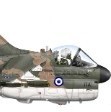

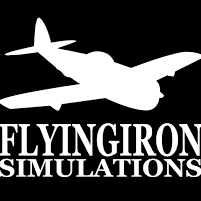
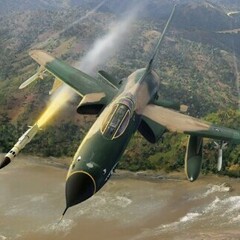






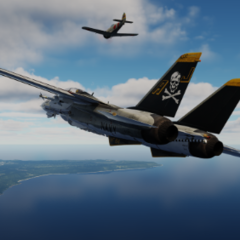



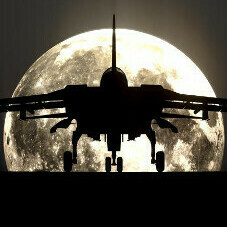

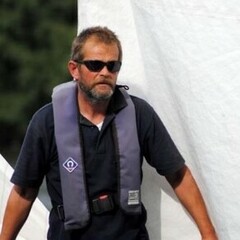
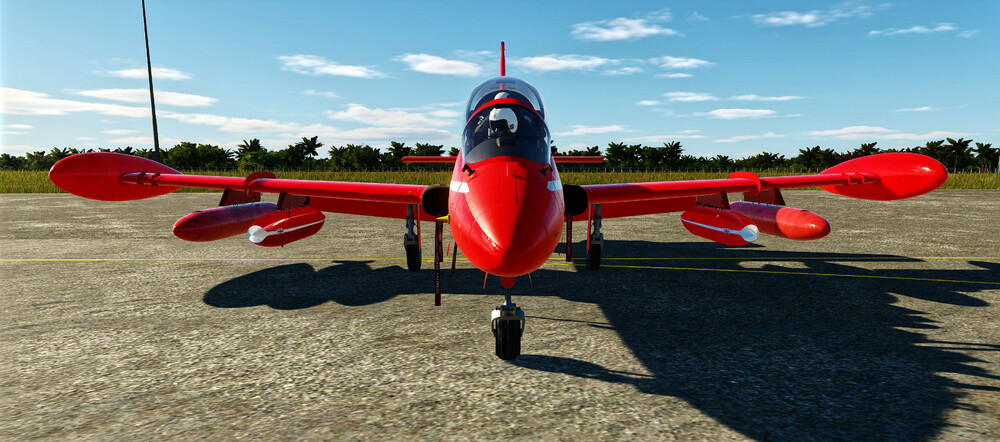
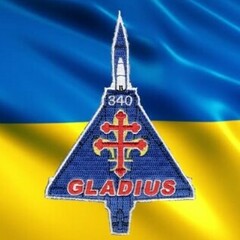


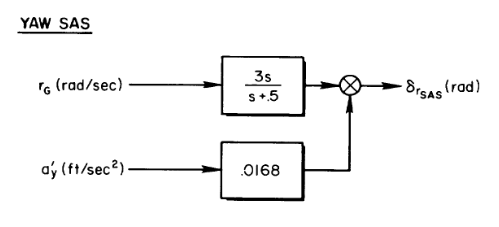






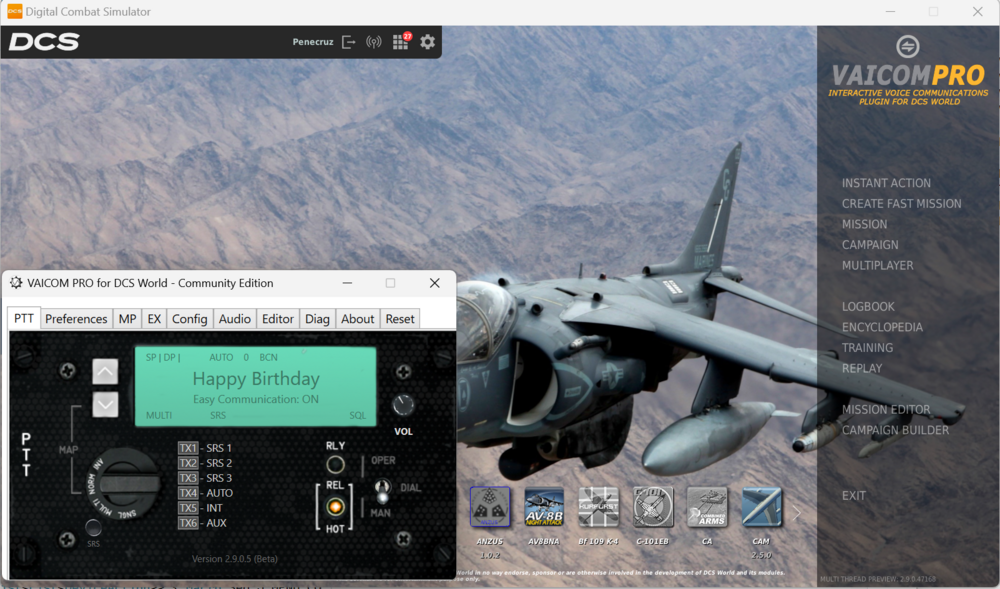

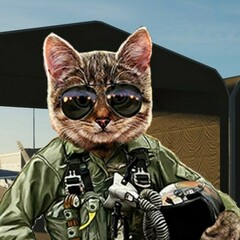

.thumb.jpeg.e9a5eea36533302653032ca510164dc5.jpeg)
